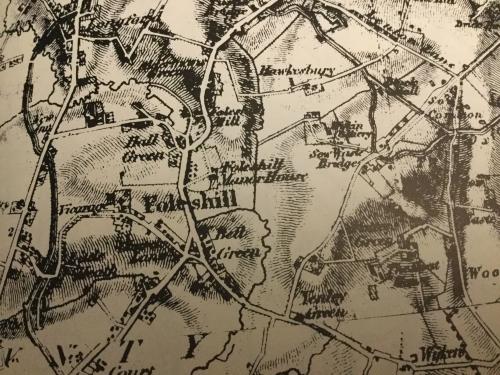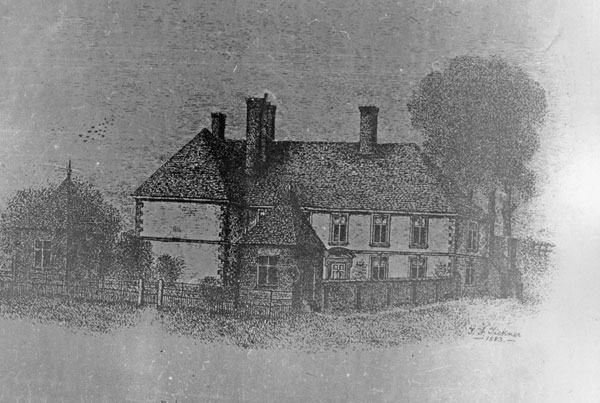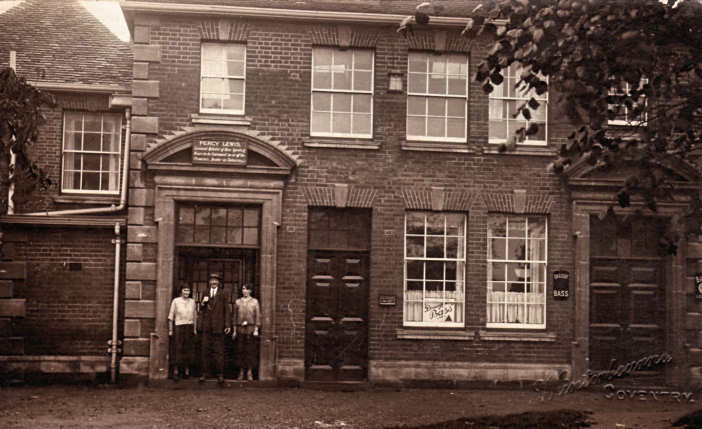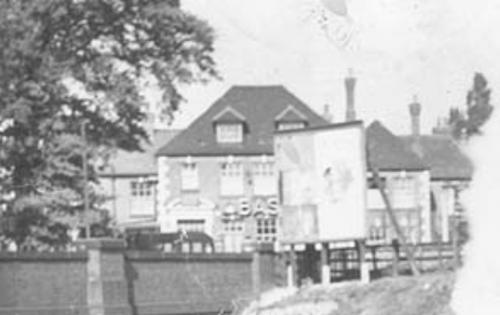|
Annewiggy
Tamworth |
316 of 379
Thu 5th Dec 2019 5:10pm
I am quite sure that Heritage's post came from the book "The Warwickshire Coalfield" Volume 1 by Laurence Frettwell. A couple of years ago I was researching the area I live in. On an 1845 map close to here is marked Park Colliery. I found the field on an old field map that our estate was built on was called Great Coalpit Close (the shape of which you can still see round the estate on Google Maps), Little Coalpit Close next to it and a road called Mount Pleasant, so it was pretty obvious there had been mining around here but a long time ago. I found the Warwickshire Coalfield book in Atherstone Library. It was full of line drawings of various coalfields including the one I was looking for, under unrecorded collieries of Wilnecote with lots of information about the 3 shafts it had. As soon as I saw Heritage's post I am quite sure it is the same book.
Reuben Smallman was a well known mining engineer who later lived in Nuneaton. He also was presented with the Albert Medal for bravery at the Baddesley pit mining disaster. |
| Coventry Suburbs and Beyond - Wyken Slough | |
|
Annewiggy
Tamworth |
317 of 379
Thu 5th Dec 2019 5:39pm
Again, I don't know the area and am confused about different manor houses and halls, but Foleshill Manor House is on this 1835 map.

|
| Coventry Suburbs and Beyond - Wyken Slough | |
|
Helen F
Warrington |
318 of 379
Thu 5th Dec 2019 5:59pm
The area has several buildings that could have fit the title of Foleshill Manor at some point.
Foleshill Hall and Farm
The map location above fits the layout of the picture below labelled Foleshill Old Hall. It's appearance suggests that it probably is an updated medieval building. It used to be off a lane called Foleshill Hall Lane that then became Lythalls Lane. Following that road takes you passed the lodge below and onto The Parting of the Heaths.
 The image below is possibly the other side of the hall in the 1920s, converted to a pub.
The image below is possibly the other side of the hall in the 1920s, converted to a pub.
 Possibly Ye Olde Hall Hotel?
Probably the gatehouse to the hall above.
Foleshill Lodge
Manor House near Hall Green but in Foleshill and the one on Anne's map. This is the best fit for name and location.
Manor House
It doesn't mean that there couldn't have been another on Lentons Lane.
Location of the Crown Inn
Possibly Ye Olde Hall Hotel?
Probably the gatehouse to the hall above.
Foleshill Lodge
Manor House near Hall Green but in Foleshill and the one on Anne's map. This is the best fit for name and location.
Manor House
It doesn't mean that there couldn't have been another on Lentons Lane.
Location of the Crown Inn |
| Coventry Suburbs and Beyond - Wyken Slough | |
|
Midland Red
|
319 of 379
Thu 5th Dec 2019 7:16pm
Yes, Helen - Ye Olde Hall Hotel was a previous mystery photo subject here some time ago |
| Coventry Suburbs and Beyond - Wyken Slough | |
|
Kaga simpson
Peacehaven, East Sussex |
320 of 379
Fri 6th Dec 2019 10:30am
Yes I believe they changed names to suit their own image. Both Norman Conquest and I knew Foleshill Manor, and the people that lived there, to be off Hall Green Road and now Wood End.
It's amusing to see in McGrory's book two pictures of Foleshill Hall in Lythalls Lane, both in the 19th century. There's a vast difference in size and looks and neither look like Ye Olde Hall - they changed the face of things in those days, more than we do now. |
| Coventry Suburbs and Beyond - Wyken Slough | |
|
Helen F
Warrington |
321 of 379
Fri 6th Dec 2019 12:23pm
Thanks MR. I can see where the old parts of the Hall were. Like the other photo, this is the opposite side to the sketch.

|
| Coventry Suburbs and Beyond - Wyken Slough | |
|
Kaga simpson
Peacehaven, East Sussex |
322 of 379
Fri 6th Dec 2019 4:37pm
Helen
The picture above is from the railway magazine, and your first picture is in McGrory's book, and yes is the Olde Hall pub. But I don't know why we swopped here because this is miles from the 'slough'.
|
| Coventry Suburbs and Beyond - Wyken Slough | |
|
Helen F
Warrington |
323 of 379
Fri 6th Dec 2019 4:50pm
Kaga, you're right but mentioning Foleshill Manor got me wondering where it was and I remembered seeing the sketch of the Hall. I then wondered where that belonged. |
| Coventry Suburbs and Beyond - Wyken Slough | |
|
Kaga simpson
Peacehaven, East Sussex |
324 of 379
Sat 7th Dec 2019 10:53am
Helen, before we leave the Olde Hall, why my view is a little different to the rest of the forum.
Right behind that hotel only two feet away was a small factory, Rubber and Ebonite, I went to work there. Just a couple of months after the April raid 1941 on Coventry, the first thing I was shown was an outside building where the fire watchers made tea during raids.
My job before leaving work was to light the fire for them. We went outside, he jerked his thumb, and said and "That's where we will be" - there was a ladder against the wall. I said "Can we go up?"
Well, we went up - I was looking down on that hotel and all over Holbrooks. After that I went up many times and learnt the drill of fire watching, but we never had another raid. I was just 14.
There were about seventy sacks of rubber substance against the wall nearest to the Hall - if they had gone up so would the Hall. |
| Coventry Suburbs and Beyond - Wyken Slough | |
|
mcsporran
Coventry & Cebu |
325 of 379
Sat 7th Dec 2019 8:21pm
Apologies if this has been posted before: Wyken Slough poster
|
| Coventry Suburbs and Beyond - Wyken Slough | |
|
Annewiggy
Tamworth |
326 of 379
Wed 11th Dec 2019 3:48pm
It appears there was still confusion as far back as 1560! An interesting extract of a lease.
In consideration of £20, by Thomas Smithe (of Foleshill, Coventry, gentleman) and his wife Margery to William Harwar (of Barwell, Leicestershire, gentleman) of their Foleshill manorhouse called Foleshill Hall with three quarters of arable, a close with a stable in it, pasture with two meadoes called "the Merfy" in diverse parts on either side of the river, a coney-warren and pools of "Mr Stokes watermill" with a windmill, reserving to the Smithes a counting-house within the mansion, all lately occupied by Lady Wellesbourne (widow), now by William Harwar: to be held from 25th March 1560 for ten years at £20 per annum, re-entry if rent fall one month behindhand. W Harwar may lop and use tinsel except upon the grove next to the mansionhouse, will repair and may use timber at his own cost. |
| Coventry Suburbs and Beyond - Wyken Slough | |
|
Helen F
Warrington |
327 of 379
Thu 12th Dec 2019 4:50pm
Can we assume that tinsel wasn't a string of sparkly plastic fur? |
| Coventry Suburbs and Beyond - Wyken Slough | |
|
Annewiggy
Tamworth |
328 of 379
Thu 12th Dec 2019 7:09pm
Helen, when I typed it I thought someone might comment on it!! It is actually difficult to find any other description for it on t'internet but looking through Coventry Collections it is described as branches which have fallen off trees by accident as in storms (they were very generous then). Apparently it was used for fencing but I suppose it would have been used for firewood as well. A lot more useful than the sparkly stuff.
|
| Coventry Suburbs and Beyond - Wyken Slough | |
|
Helen F
Warrington |
329 of 379
Thu 12th Dec 2019 8:06pm
One of the things that strikes me about the oldest images are the lack of trees and bushes. The further back, the fewer trees. Obviously if you go back far enough the forests reappear but there are no images that old. That's why the existing old views show so much detail - nothing in the way. |
| Coventry Suburbs and Beyond - Wyken Slough | |
|
Kaga simpson
Peacehaven, East Sussex |
330 of 379
Fri 13th Dec 2019 10:42am
Annewiggy,
Yes I was about to answer, tinsel I believe was the end few leaves on tree or bush or called brushwood, they were used on the floors to smell nice, then when dry they started fires with it. If it was thick enough they made animal hurdles with it, cutting off the little twigs that were spindly, so much like the tinsel of today.
Helen,
I think we lost a third of the countryside to bring in more arable land in the war, then a lot was lost to house and train the army. The new forest lost a lot when an airfield was built, young trees crushed under tanks, there was a lot we quickly forget. |
| Coventry Suburbs and Beyond - Wyken Slough | |
This is your first visit to my website today, thank you!
4,076,896Website & counter by Rob Orland © 2024
Load time: 876ms